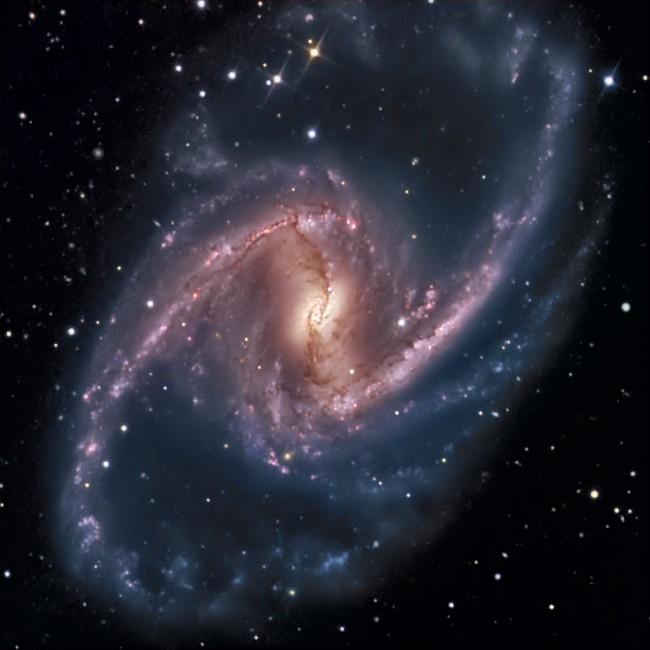
The galaxy NGC 1365. At its heart lies a massive black hole that emits bright X-rays. SAO astronomers have measured the size of the region by watching small orbiting clouds move across the region and block its emission.
Nearly all galaxies are thought to have massive black holes at their nuclei, containing millions or even billions of solar masses of material. The size, structure, and physical properties of the circumnuclear regions are hotly debated, however, because of their importance: activity from the region can power humongous, bipolar jets of particles, stimulate star formation, and determine the future evolution of a galaxy.
A team of five SAO astronomers, Guido Risaliti, Martin Elvis, Pepi Fabbiano, Allesandro Baldi, and Andreas Zezas, along with eight colleagues, used an X-ray satellite to stare at the nucleus of one X-ray emitting galaxy whose brightness had been known to vary. They watched it flare up dramatically in less than one day - by factor of five at some X-ray wavelengths. Using their models, they were able to determine convincingly that a cluster of opaque small clouds probably orbits the black hole. They found that the size of the X-ray emitting region is probably tiny - about one-third of an AU (the size of the earth's orbit around the sun) - while the clouds themselves are probably located about 80 AU away from the black hole. The results directly address hypothetical models of the activity around a massive black hole nucleus, and lend support to the conventional understanding of these powerful but mysterious objects.